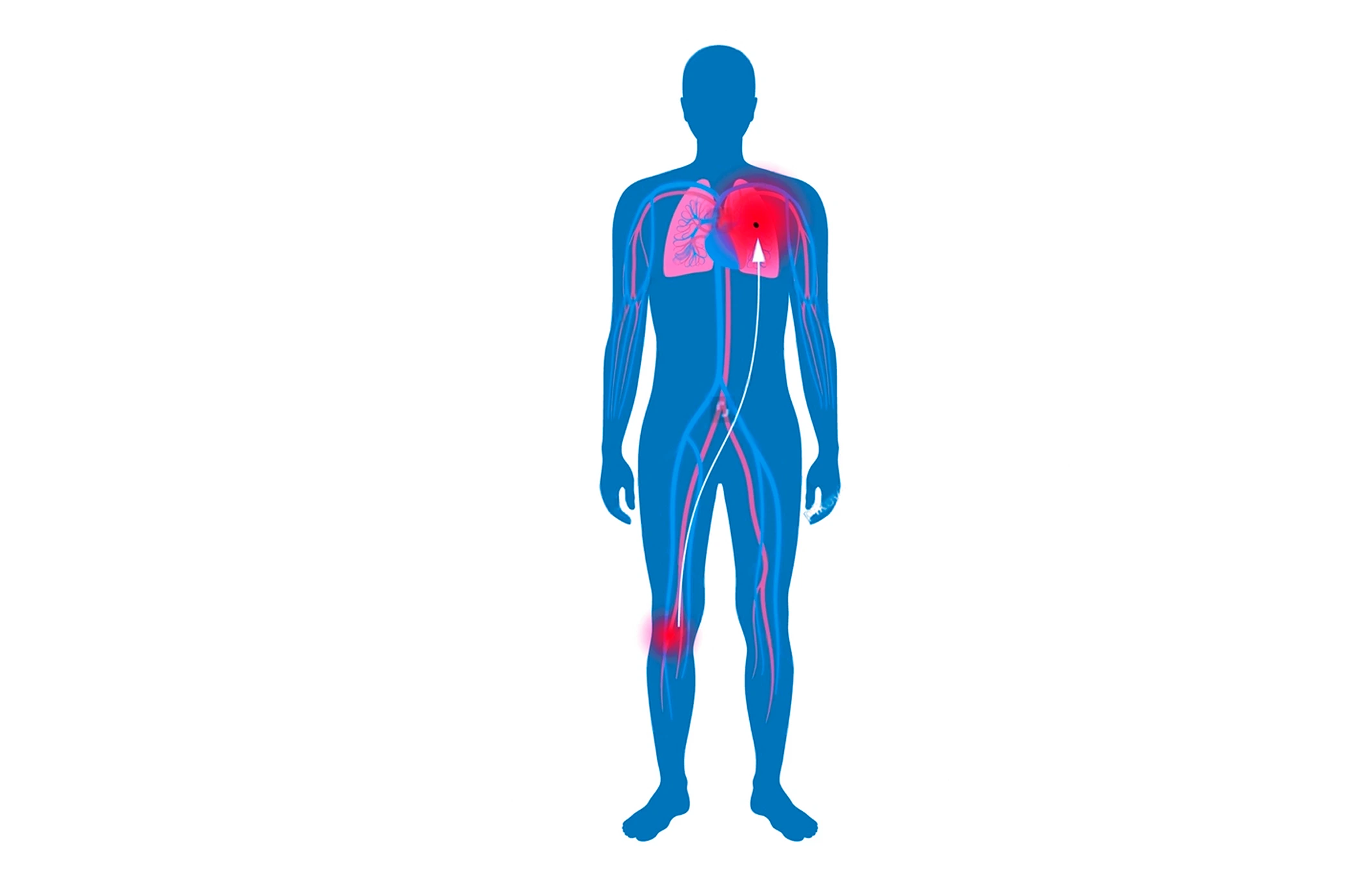Contact us
Precision Medicine
What is deep vein thrombosis?
25 September 2025
Deep vein thrombosis (DVT) is the formation of a thrombus or blood clot in the deep veins of the body, usually in the lower limbs. While this condition often causes swelling and pain, it’s also possible to have no symptoms.
It is a serious condition because the thrombi can break away from their original site and travel through the blood to the lungs, causing a blockage that leads to a pulmonary embolism.
You may develop deep vein thrombosis if you have an anomaly in your blood clotting mechanisms, have suffered from infections or trauma, are bedridden for a long time due to hospitalization or inactivity, or if you take long trips and don’t move your legs during them.

Signs and symptoms Deep Vein Thrombosis
As mentioned, symptoms may not appear in deep vein thrombosis, but when they do, they include:
- Swelling in the lower limb with the clot.
- Aching leg with a cramping sensation, radiating from the calf to the rest of the leg.
- Paleness or a reddish appearance in the leg.
- Warmth in the leg.
When the clot has broken off and a pulmonary embolism occurs, the symptoms include:
- Breathing problems.
- Accelerated heart rate.
- Shortness of breath.
- Coughing episodes with traces of blood.
- Chest pain.
- Dizziness.
- Fainting.
Risk Factors for Deep Vein Thrombosis
The development of deep vein thrombosis is a complex process that can be influenced by various circumstances and pre-existing patient conditions. For example, factors that can affect the body’s ability to properly manage blood circulation or alter venous flow. Factors that have been linked to this condition include:
- Taking contraceptives.
- Hormone treatments.
- Overweight and obesity.
- Smoking.
- Being over 55 years of age.
- Taking long trips where the legs are immobilized.
- Prolonged hospitalization.
- Trauma or surgery on the legs.
- Pregnancy.
- Having cancer.
- Chemotherapy.
- Radiotherapy.
- Suffering from heart failure.
- Crohn’s disease.
- Ulcerative colitis.
- Having family members who have had deep vein thrombosis.
- Genetic anomalies.
Deep vein thrombosis can cause severe complications like a pulmonary embolism, but it can also lead to post-phlebitic syndrome and hemorrhages due to the action of the anticoagulants administered to treat it.
Diagnosis Deep Vein Thrombosis
Once the medical specialist has analyzed the patient’s symptoms and medical history, they will perform a physical examination to check for inflammatory processes in the legs, as well as the presence of pain or tenderness when touched.
Tests may also be ordered to confirm the diagnosis, which include blood analysis, ultrasound, magnetic resonance imaging (MRI), and venography.
Treatment Deep Vein Thrombosis
The treatment plan will aim to dissolve the clot if possible, prevent it from growing, stop it from breaking off, and prevent the formation of new clots. This may include anticoagulants and thrombolytics, as well as the placement of a filter in the vena cava to prevent the clots from reaching the lungs.
Similarly, compression stockings should be used for two to three years to prevent the formation of new clots.
At the Vascular, Arterial, and Venous Disease area of Centro Médico Saludora, we can provide you with specialized care. Contact us!
Fuentes:
How can we help you?

Ricardo Ostos
Content CreatorLearn more about Ricardo on LinkedIn